San Elijo Lagoon Inlet Facing Possible Closure
Follow ( 0 Followers ) X Follow E-mail : * Follow Unfollow
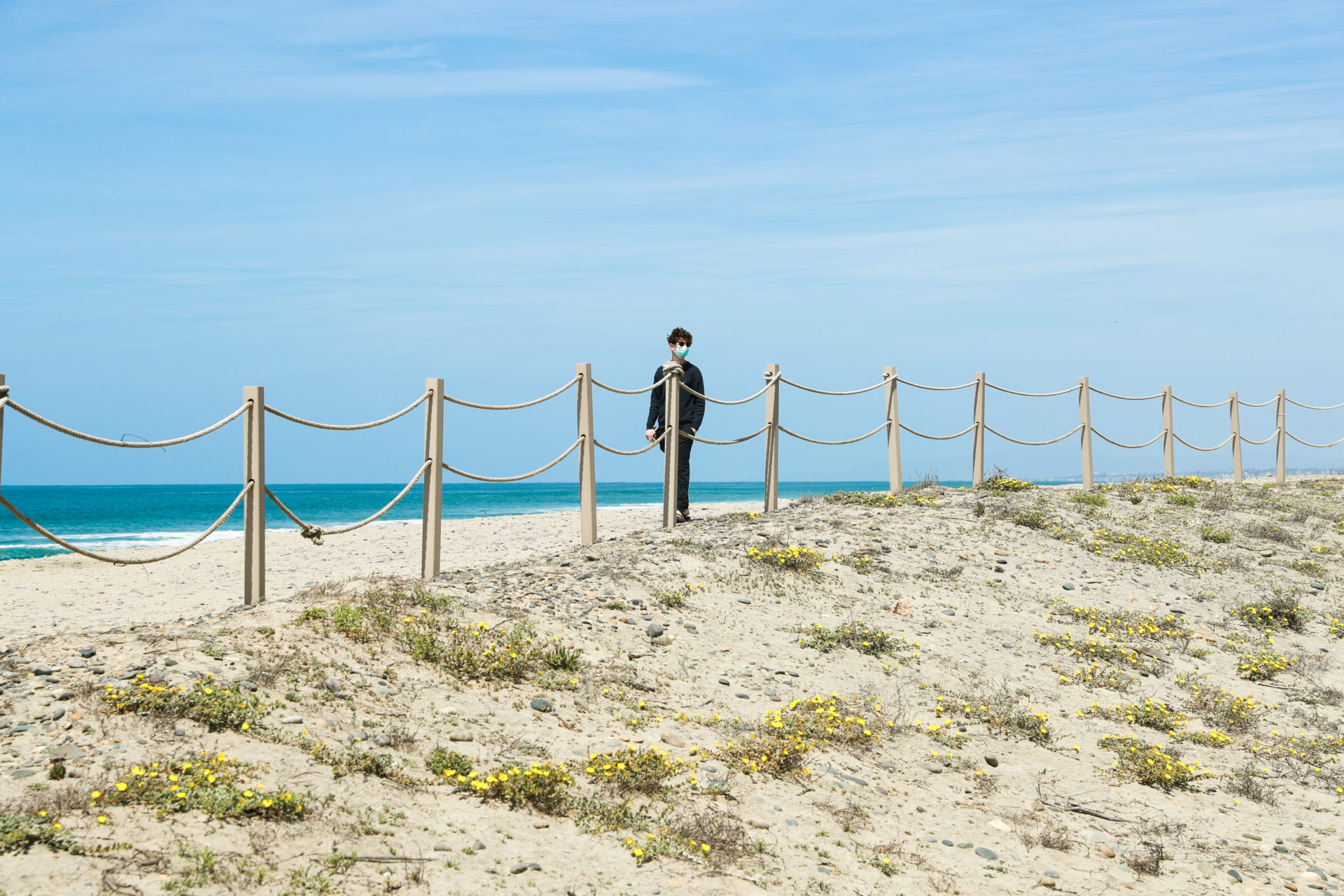
If you visit South Ponto State Beach, or the beach near South Carlsbad State Beach campground, you may get to see habitat restoration magic in action!
Over the years, people have carved shortcuts to the ocean in the coastal bluffs. This erosion adds to the natural forces of the pounding ocean meeting steep sandstone cliffs at times. Our removal of invasive plants, and the installation of plants indigenous to this area, will not only add beauty and color to our views: it is saving bluffs and dunes from disappearing!
In the restoration site at South Ponto State Beach, local plants were struggling to take root with many invasive plants crowding in.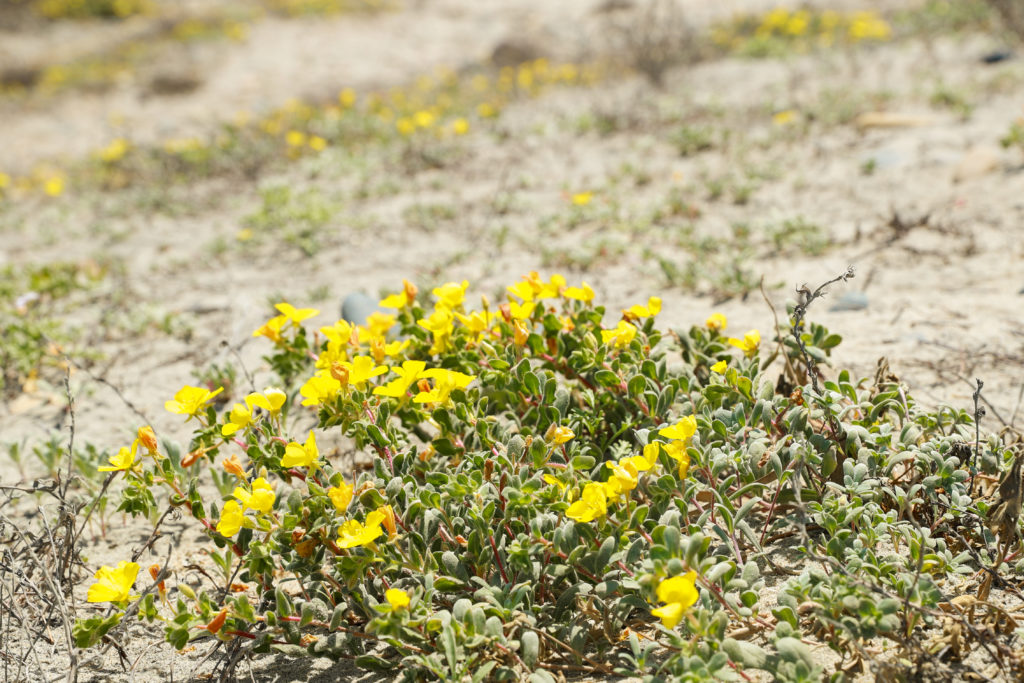 Above: Spring blooms of Beach Primrose brighten the South Ponto Beach coastal sand dunes. A dense covering of pale hairs protects this plant from the hot summer sun. A deep taproot and low-growing form anchor it against wind and shifting sand.
Above: Spring blooms of Beach Primrose brighten the South Ponto Beach coastal sand dunes. A dense covering of pale hairs protects this plant from the hot summer sun. A deep taproot and low-growing form anchor it against wind and shifting sand.
The 1-acre Carlsbad Bluff restoration site contains two special status species: California box thorn and wooly seablight.
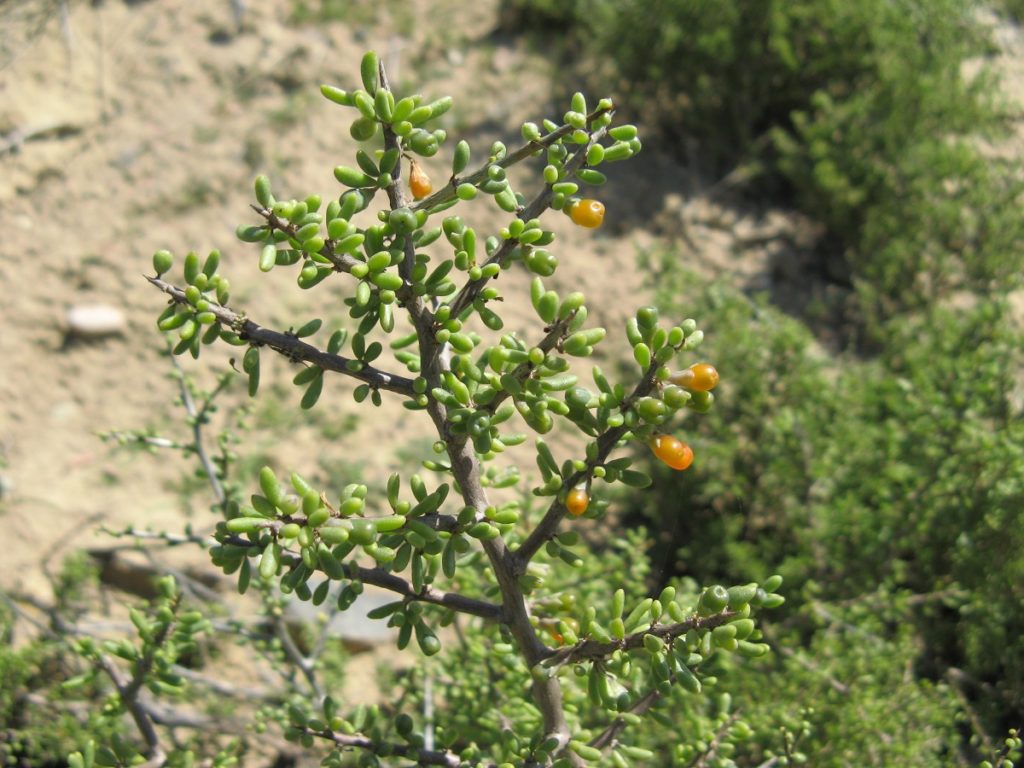
Above: California box thorn is a listed, threatened species because of its limited distribution in California and it is greatly affected by development and foot traffic.
Other plants indigenous to this area include bladderpod, saltgrass, goldenbush, beach bur, salt heliotrope and Sacred datura. Plants are amazing! Many of them host important daytime and nighttime pollinators.
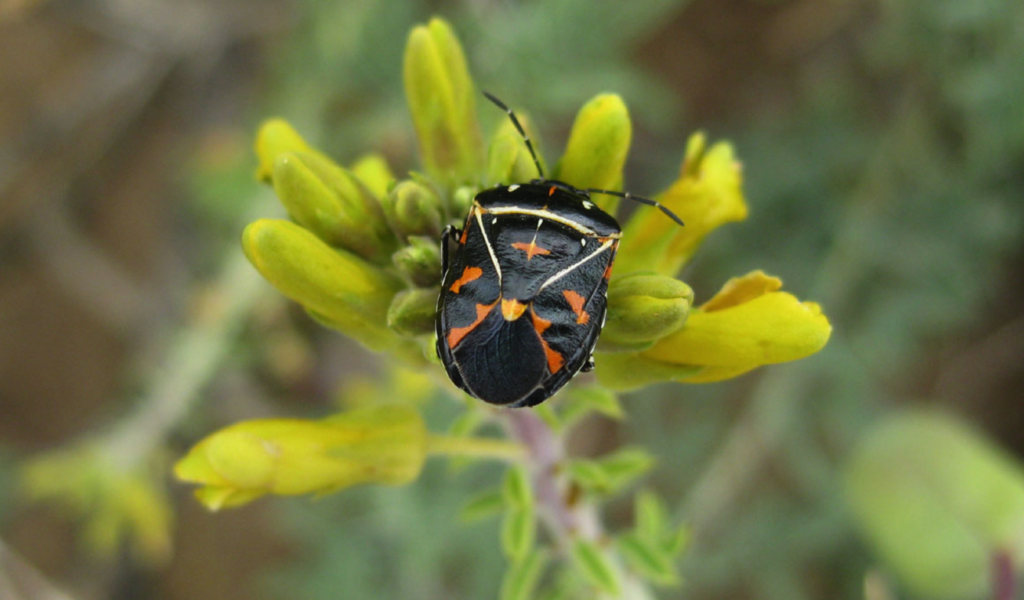
Above: In spring, bladderpod bears clusters of bright yellow flowers, which attract hummingbirds, butterflies and many types of bees. Bladderpod is a host of the colorful harlequin bug, which sucks sap from the flowers, pods and leaves. Look closely at a bladderpod and you will usually find one or a few of these black and orange bugs. Photo by Barbara Wallach
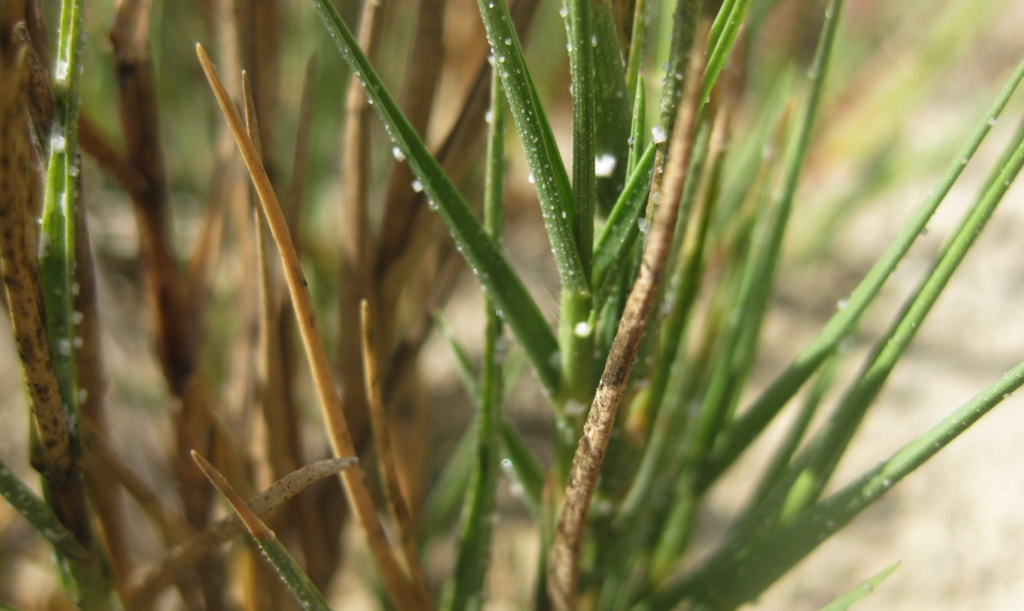
Above: Saltgrass is uniquely adapted to live in high salinity habitats that would kill most other plants. Look closely at a leaf in the sun, where the excreted salt crystals sparkle like diamonds. Saltgrass is vital to the Wandering Skipper, a rare butterfly of our coastal marsh and dune habitats. Its larvae tolerate the salt they consume in their diet of saltgrass.
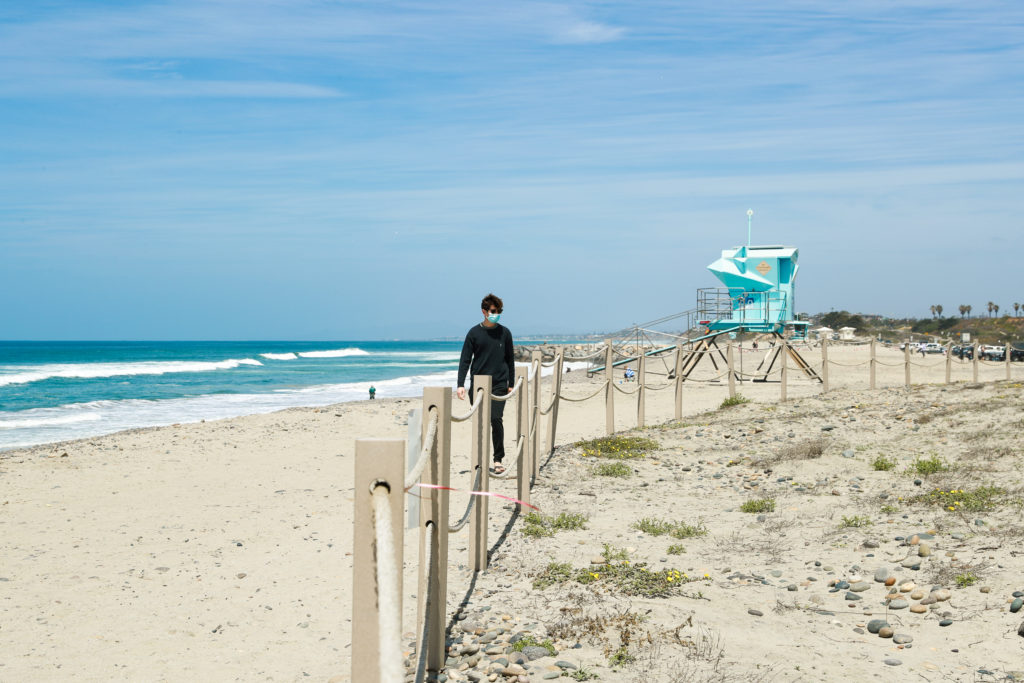
Above: You can see how some dune plants are growing, but a diversity of indigenous plants will provide more stability for these dunes. And, expanded nesting habitat for shorebirds, like the endangered California Least Tern.
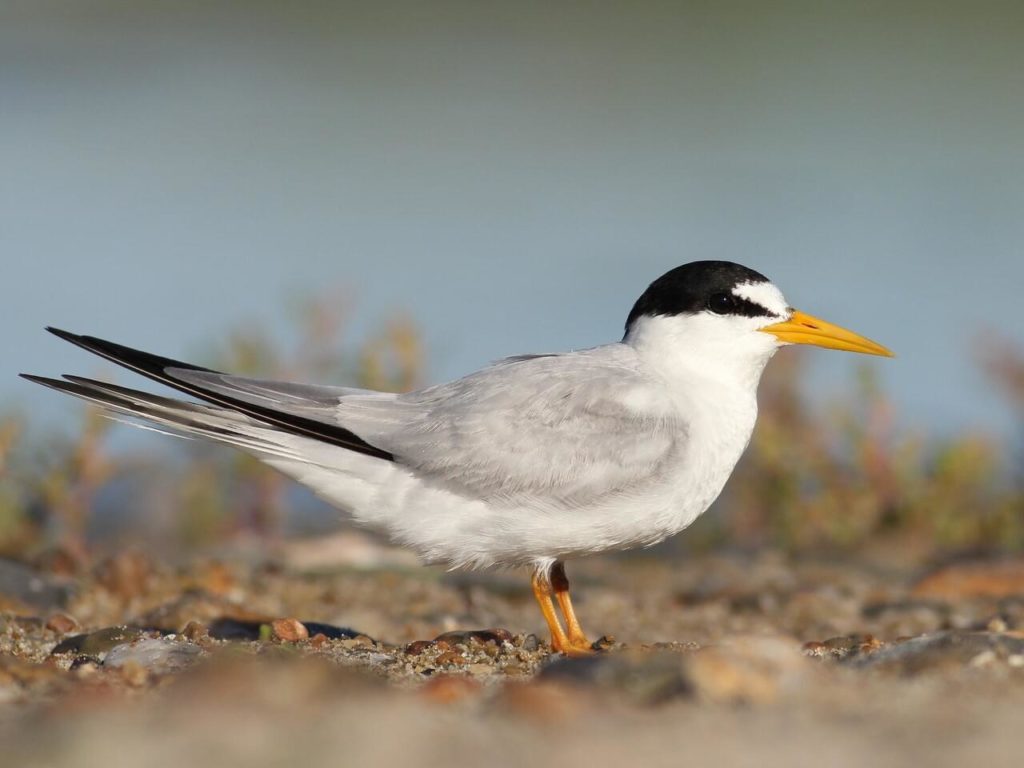
Above: The endangered California Least Tern lives among the coastal dunes in spring and summer and flies back to Central and South America in winter. It’s the world’s smallest tern. You can see them look like tiny bombers as they dive into the ocean after fish. Photo courtesy allaboutbirds.org
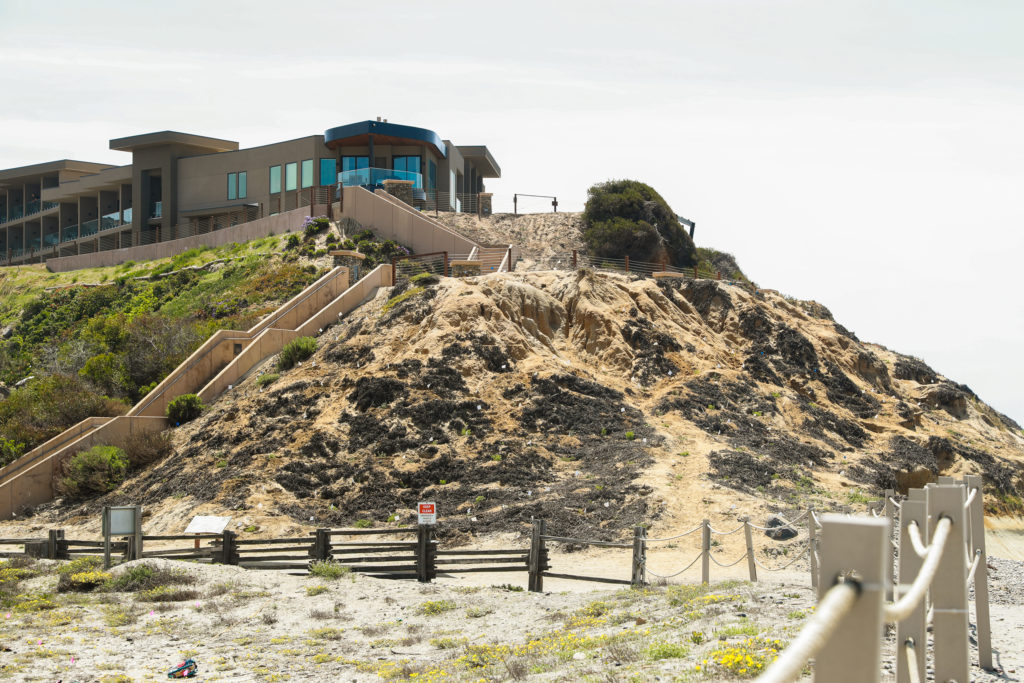
Above: South Ponto Bluff stabilization is made possible by more consistent and dense plant cover that will also help to keep people on the main pathway. We are removing invasive iceplant and sea lavender. And installing plants that are indigenous to the area, including goldenbush and saltgrass.
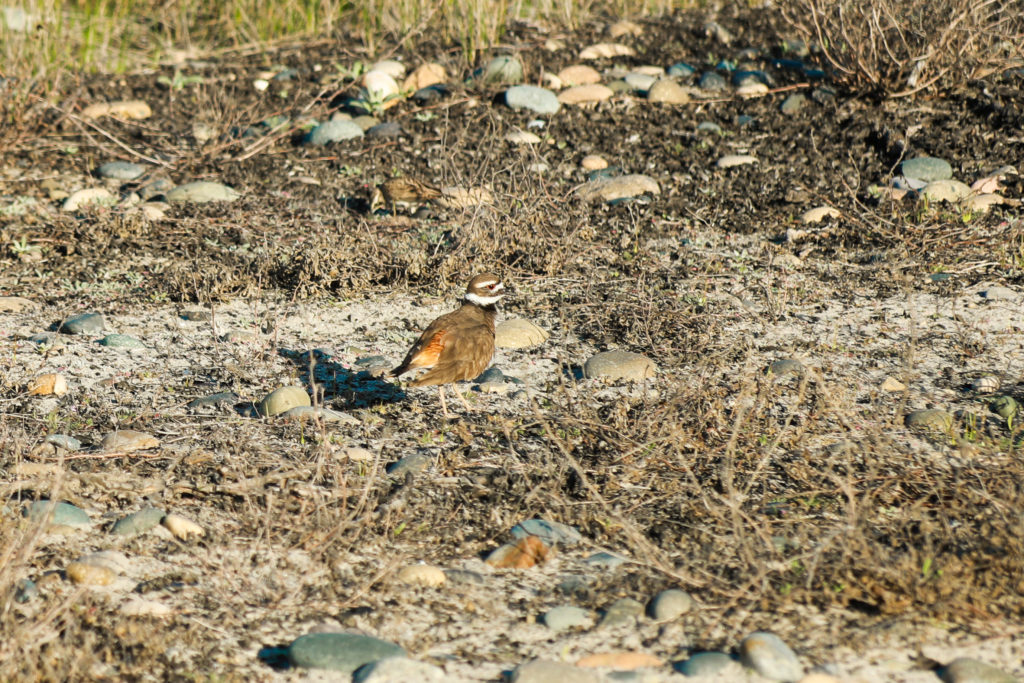
Do you see the other Killdeer in the Ponto Beach coastal sand dunes? This year-round shorebird is a good actor! It fakes a broken wing to pretend to be an easy snack as it lures predators away from its nest. We recently discovered a Killdeer nest with 4 eggs within this restored area!
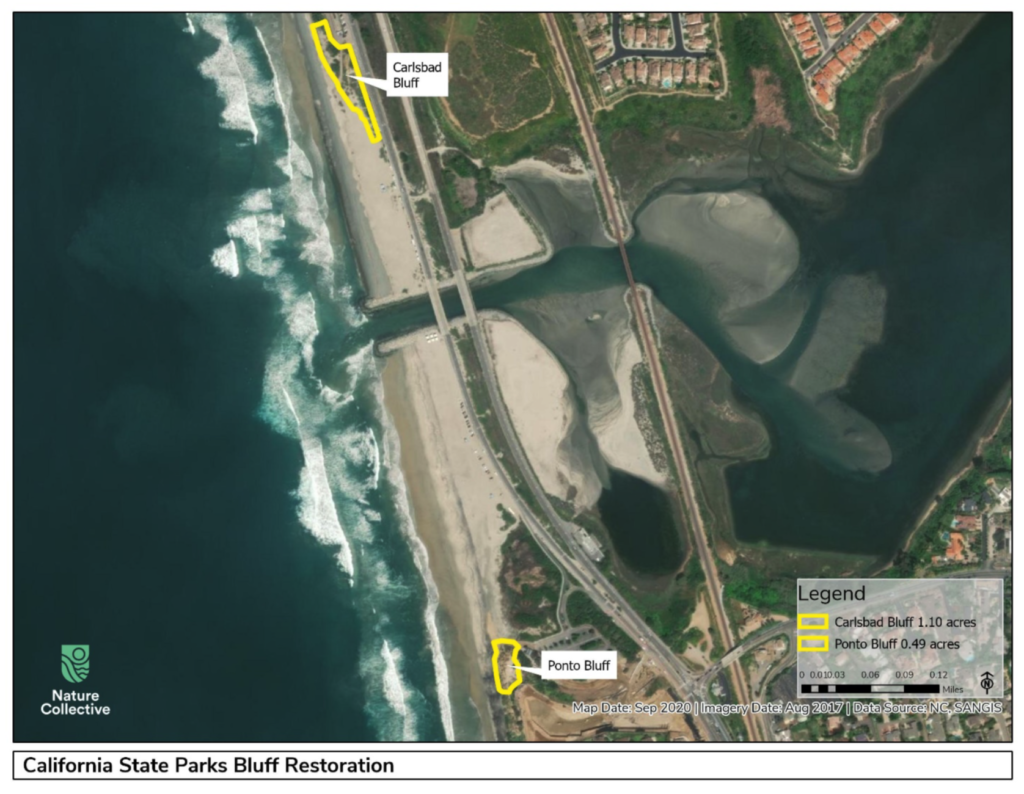
Grant funding by SANDAG, in partnership with California State Parks, supports these Nature Collective habitat restoration actions. Our consultancy + experiences are directly improving fragile coastal habitats in Carlsbad, California. More life is beginning to be seen in these sites, including pollinators, bright flowers, and green cover.
We will monitor each site and coordinate with subcontractors to treat and remove invasive plants throughout the restoration.
Interested in teaching others the importance of protecting these fragile habitats? Contact us about future opportunities to become a Volunteer Ambassador.
Follow ( 0 Followers ) X Follow E-mail : * Follow Unfollow
Follow ( 0 Followers ) X Follow E-mail : * Follow Unfollow